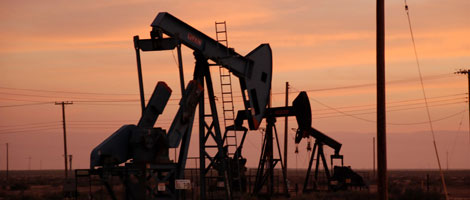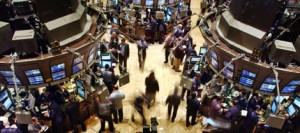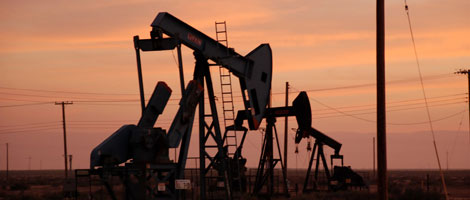
December 27, 2017 | Daily JAM, Mid Term, Volatility, You Might Have Missed |
Black swan events in the financial markets are terrifying. By definition they’re extremely rare and extremely difficult to predict. Which wouldn’t be so scary if their effects weren’t so catastrophic. A 10% drop in the Standard & Poor’s 500 would certainly be painful–but it doesn’t rise to the category of a black swan. Neither does a 15% drop in the price of Bitcoins. Or a 20% drop in the price of Apple (AAPL). All these are relatively normal negative events. They’ve happened before. They happen relatively frequently. And in some cases–that of Bitcoin or the S&P 500, for example–they’re absolutely statistically normal for the market or a part of the market or a specific asset. No, the label “black swan’ is reserved for things like the 2008 global financial crisis that almost brought the world’s financial markets and its real economies to their knees. Or the Dot.com crash of 2000, which saw corporate giants such as Nortel Networks disappear from the economic landscape. Or the oil price crash of 2008 that saw oil soar to a high of $147 a barrel in July and then plunge to $32 by December. Given how devastating to a portfolio a black swan event can be, it seems, at first, surprising that most lists of “bad things that could happen in the year ahead” pretty much ignore this type of financial event.

December 14, 2017 | Daily JAM, Morning Briefing, Short Term |
No one should be surprised that U.S. oil shale producers are increasing production in reaction to higher oil prices after OPEC’s production cuts. The speed and the dimension of the increase, however, is more than previously hoped.

December 8, 2017 | Daily JAM, Notes You Need |
In my daily trawling through the market I come upon lots of tidbits of knowledge that I think are important to investors but that don’t justify a full post. I’ve decided to start compiling these notes here each day in a kind of running mini blog that I’m calling Notes You Need. A typical blog post resembles this one from today: “12:20 p.m.: The Japanese government has reported that the country’s economy grew by 0.6% in the third quarter from the second quarter. That brings year over year growth to 2.5%. Economists had expected year over year growth of 1.5%. A 2.5% growth rate for Japan is stunningly high. At this point a year ago the economy was growing at a 1.4% rate.”

December 1, 2017 | Daily JAM, Morning Briefing |
After climbing yesterday by 1.7% on news that OPEC and allies including Russia would extended their agreement to cut production through the end of the year, oil rallied again today. U.S. benchmark West Texas Intermediate closed up 1.64% to $58.34 a barrel. International benchmark Brent crude climbed 1.68% to $63.68 a barrel. The big surprise yesterday was that OPEC members Libya and Nigeria joined the agreement

November 27, 2017 | Daily JAM, Morning Briefing |
On Friday oil futures hit a 29-month high. That took West Texas Intermediate to a gain of 8.5% in 2017 to date. However, energy stocks in the Standard & Poor’s 500 are off 9.8% when the S&P 500 itself is up more than 16% for 2017. Energy stocks normally go up when the price of oil rises Sp how do we explain the decline in energy shares at the same time as oil prices are rising?

November 26, 2017 | Daily JAM |
The battle over the Republican tax cut bill in the Senate will draw most of the attention in the headlines. But the week includes other market moving news on retail sales and OPEC plans for extending production curbs.

November 15, 2017 | Daily JAM, Notes You Need |
In my daily trawling through the market I come upon lots of tidbits of knowledge that I think are important to investors but that don’t justify a full post. I’ve decided to start compiling these notes here each day in a kind of running mini blog that I’m calling Notes You Need. Items in this miniblog include posts like this today: “CNBC discusses comments from analysts who are speculating that Apple (AAPL) might introduce video streaming service to compete with Netflix (NFLX). Apple opened lower this morning to close last week’s bullish gap along the 168.50 area.”

November 14, 2017 | Daily JAM, Morning Briefing, Short Term |
This morning the International Energy Agency cut it monthly forecast for crude oil demand by 100,000 barrels a day for 2017 and 2018. U.s. benchmark West Texas Intermediate fell 2.77% to $55.17 a barrel. (West Texas Intermediate has been slipping lower since it closed at $57.35 on November 6.) International benchmark Brent crude fell 2.82% to $61.38 a barrel.

November 7, 2017 | Daily JAM, Mid Term, Morning Briefing |
Good news for oil prices: OPEC raised its forecast for global oil demand in 2021 by 2.3 million barrels a day above last year’s projection. It also raised its oil demand forecast in 2040 by 1.7 million barrels a day to about 111 million barrels. Bad news for oil prices: OPEC also forecast that oil output from North American shale producers will hit 7.5 million barrels a day in 2021.

November 6, 2017 | Daily JAM, Morning Briefing |
It’s not so much that the anti-corruption crackdown launched by Saudi Crown Prince Mohammed bin Salman over the week signals any significant change in the kingdom’s oil policies. It’s just that any turmoil in Saudi Arabia sends oil traders scrambling to get long on the chance that events in the Middle East will upset oil markets. Oil prices hit their highest since July 2015 on Monday

November 3, 2017 | Daily JAM, Notes You Need |
In my daily trawling through the market I come upon lots of tidbits of knowledge that I think are important to investors but that don’t justify a full post. I’ve decided to start compiling these notes here each day in a kind of running mini blog that I’m calling Notes You Need. Items in this mini-blog include mentions like this one: “10:20 a.m.: Japan’s stock market was closed today but the Nikkei 225 index gained 2.4% for the week continuing its post-election run higher.”

October 16, 2017 | Daily JAM, Morning Briefing, Short Term |
Today, we’ve got more chaos in oil geopolitics, this time from Iraq where the central government in Baghdad has launched a military operation to seize the oil fields near Kirkuk from forces loyal to the Kurdish regional government. The fields produced 544,000 barrels of oil a day in 2016, about 12% of Iraq’s total production, and production was projected to rise to 602,000 barrels a day in 2017. The area is projected to hold 45 billion barrels of oil, more than the reserves of Nigeria.









